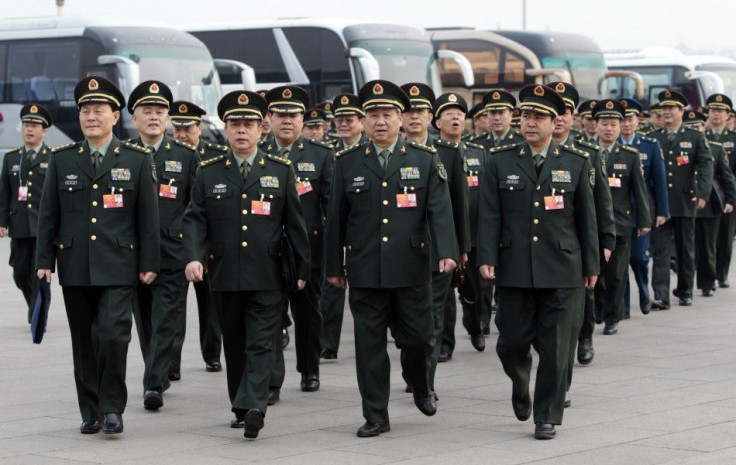Anti-Satellite Missiles, Planes And Submarines: China As A Military Threat

2012 was a big year for China’s military as the country became more comfortable as a global superpower. China’s military has been growing slowly over recent years, and it doesn’t plan on stopping. Still, China remains vastly inferior to the United States in its ability to project power overseas -- but it may soon be able to threaten adversaries in space.
According to various media reports, China is planning to test the nation’s missile defense interceptor, which can also be used as an anti-satellite (ASAT) missile.
According to the Economic Times, China is gearing up for another anti-satellite weapon test this month, probably in the next week or two. The missile could threaten American satellites, including those used for Global Positioning System (GPS) services.
In 2007, an unannounced ASAT missile test was successful and resulted in the destruction of a Chinese weather satellite, sending thousands of pieces of debris in orbit, threatening damage to other satellites in space.
According to the Washington Times, U.S. intelligence agencies are prepared and are closely monitoring China’s facilities, especially after the 2007 incident. The new anti-satellite missile, called the Dong Ning-2, or DN-2, is reportedly more advanced and capable of reaching farther into space than the 2007 ASAT missile. The DN-2 is said to be able to hit several types of navigation, communication and intelligence satellites, by colliding with them at high speed. This is a particular threat to U.S. intelligence because it relies heavily on satellites, as does the American military.
China’s Global Times, a state-run newspaper, did not specifically confirm the missile test, or when it will happen, but it did recognize that it would be in keeping with China’s goals: “It is necessary for China to have the ability to strike U.S. satellites. This deterrent can provide strategic protection to Chinese satellites and the whole country’s national security,” the Global Times said.
China’s development as a military power is a cause for concern in the region, which is already on edge due to tensions between China and Japan over disputed islands, among other reasons.
In 2012, amid a dispute with Japan over the Diaoyu/Senkaku Islands and the U.S. strategic “pivot” toward Asia, China stepped up its game as military power player with the successful flight of the Shenyang J-15 fighter jet, based on a Russian design but with additional weapons and radar technology that are completely manufactured in China. Another milestone in aerospace development was China’s fourth manned space mission, completed last summer and made with the nation’s first female astronaut. Since then, the lofty goal of having a space station by 2020 does not seem out of reach.
The J-15 fighter was also used in the first landing of an airplane aboard the nation’s first aircraft carrier, the Liaoning, a 1980s-era Russian ship that China bought for scrap from the Ukraine before refurbishing it and putting it in service.
Analysts point out that while that landing represented a giant step for China, it should be noted that the nation has one, small, and not fully functional aircraft carrier and is currently not building any more, while the U.S. has 10, plus three under construction. Still, China’s naval presence in the South China Sea is becoming especially important for the nation amid its territorial disputes. Last June, the same week it sent the Shenzhou-9 into space, a manned submarine named Jiaolong successfully dove to 23,000 ft. (seven kilometers) in the Pacific Ocean.
Whether or not the anti-satellite missile test occurs this month, the growth of China’s military is a fact; in terms of personnel, it is the world’s largest. Coupled with the continued expansion of naval, land and air forces, that means the nation will continue to be a growing force of which not only the U.S. should be mindful, but the rest of the world as well.
© Copyright IBTimes 2024. All rights reserved.




















